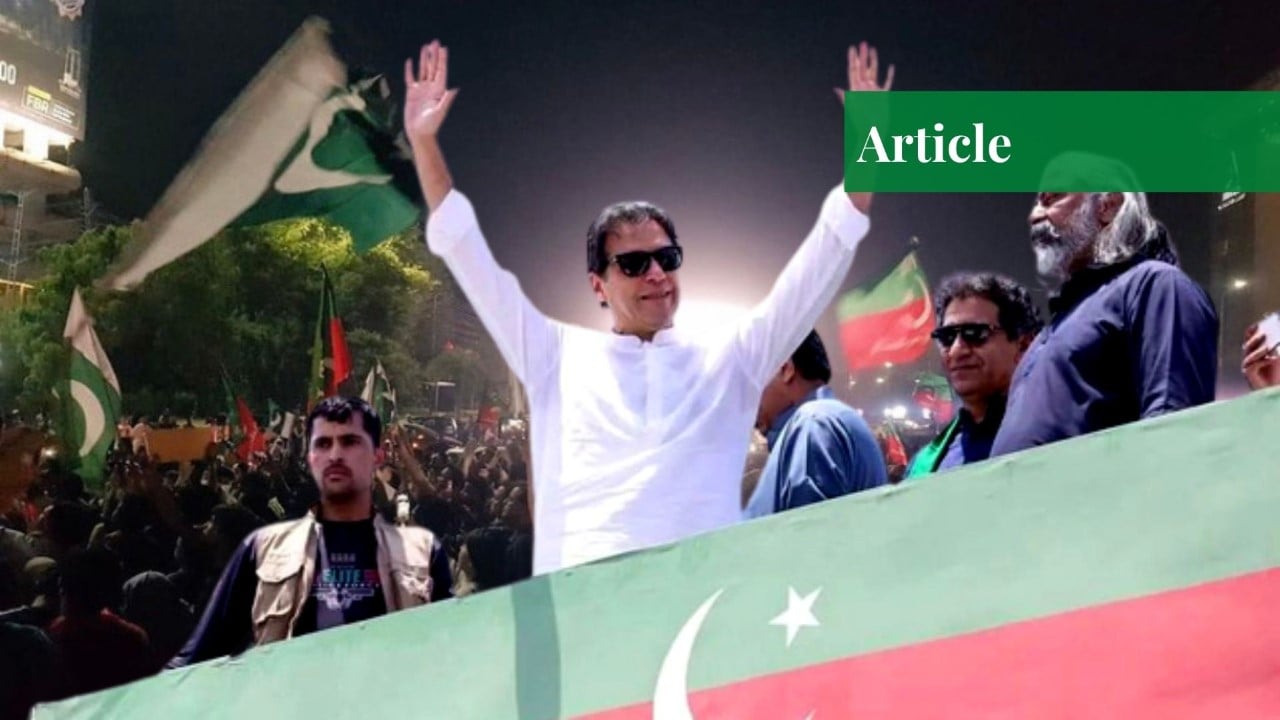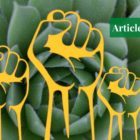Azadi March
After a core committee meeting in Peshawar, PTI chairman, Imran Khan, addressed a press conference on 22nd May and announced the date for Long March. He called his supporters to come to Islamabad and protest against the “imported government”, which removed the PTI government in Pakistan by conspiring with ‘foreign powers’. The PTI chairman demanded early elections and immediate dissolution of assemblies.
Pakistan Tehreek-e-Insaf (PTI) previously held demonstrations and sit-ins against the government in 2014. After losing the no-confidence motion in the National Assembly on 9th April, Khan has not been silent against the new government, conducting huge rallies and large congregations. He blamed a US conspiracy for his removal and the PDM alliance.
The PTI chairman’s march of ‘Azadi’ to Islamabad against the new government was a “movement for true freedom.” However, after the announcement, a massive number of raids at PTI workers’ houses at midnight and arrests followed. Numerous important PTI leaders based in Punjab were targeted, including Hammed Azhar, Yasmin Rashid, Sheikh Rasheed, Fiyaz-ul-Hassan Chouhan, and Fawad Chaudhry, among others.
Raids
In Sindh, Saifur Rehman was arrested and raids on the houses of Saeed Afraid, Bilal Ghaffar, and Shehzad Qureshi were made. The government sources said that Azadi March would not be allowed if PTI tried to reach the Red Zone. In another meeting at the CM office on Monday, police were contacted to take action for controlling the protest.
In addition, on Tuesday, Interior Minister Rana Sanaullah said that the government wouldn’t allow the long march to take place. After the death of a constable who was killed during a police raid, he said that the party has resorted to “using bullets”. Various measures were taken to suppress and obstruct the long march. Melted shards of glasses were laid down on some of the roads as well.
D-Chowk was sealed and all the exits and entry points were blocked. In a series of rapid developments, a day before the Long March, Section 144 was imposed by the federal government and the Punjab and Sindh provincial governments too. It was imposed as per Section 195 of the Code of Criminal Procedures (CrPC). According to this, a ban on public gatherings and rallies in the provinces was imposed in the provinces.
The Supreme Court allowed Imran to stage his protest at H-9, Islamabad. On 25th May, Imran Khan started his long march from Khyber Pakhtunkwa with thousands of supporters to reach Punjab. Pakistanis witnessed an extremely tense situation when clashes between police and the protestors broke out. Soon, social media was flooded with videos of the police crackdown on the people trying to reach Islamabad.
The use of tear gas and heavy shelling to control the crowds of people was seen across Lahore, Karachi, Islamabad and other parts of the country. One incident that garnered much attention was the attack on former Health Minster, Yasmin Rashid’s car. The windows and windscreens of her car were smashed. A prisoner van in Karachi was also set on fire. Later, the Interior Minster himself said that a total of 4,417 raids and 1,700 arrests were conducted.
Imran Khan’s Ultimatum
As the former PM reached Islamabad, the situation escalated. As a result, the Pakistani Army was called in to protect the Red Zone. The Red Zone is home to high-profile political buildings such as the Supreme Court, the Prime Minister House, and the US embassy. Article 245 was quoted by Rana Sanaullah for the deployment of troops.
Pakistan’s Supreme Court allowed PTI to hold a protest in an area between H-9 and G-9, near Peshawar Morr. It also ordered the government and Imran Khan to find a middle ground and move towards peaceful negotiations. After witnessing the anarchical state of affairs, Imran Khan abandoned the plans to hold a sit-in, and instead gave an ultimatum of six days. On Thursday, Shehbaz Sharif said that elections would only be announced by the National Assembly.
The political violence claimed the lives of five PTI workers with thousands injured. A petition has been filed by Attorney General Ashtar Ausaf regarding the violations during PTI’s Long March. Although sit-ins and protests are not new for PTI and Pakistanis, such resistance by the government to allow the movement is unusual. For now, uncertainty ensues in the political landscape of the country.
If you want to submit your articles, research papers, and book reviews, please check the Submissions page.
The views and opinions expressed in this article/paper are the author’s own and do not necessarily reflect the editorial position of Paradigm Shift.



















